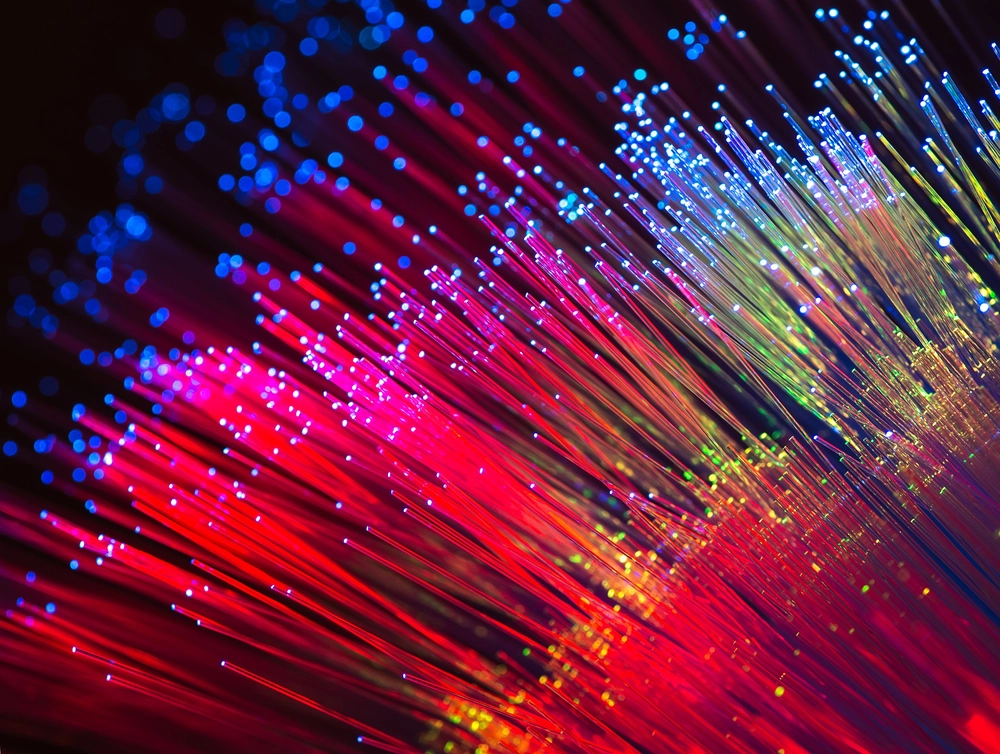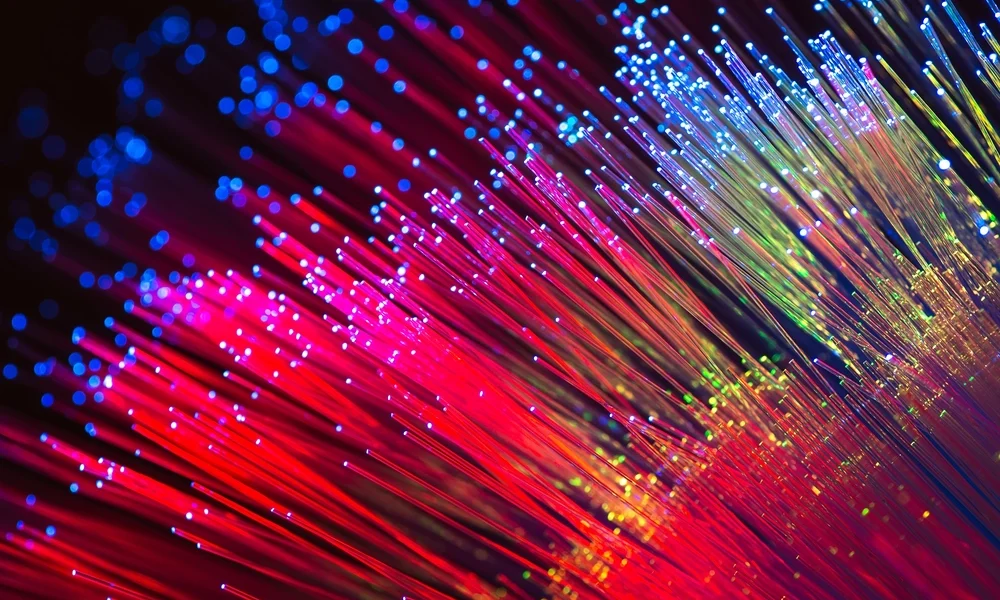The transformative impact of fiber optics across industry and our world
We have all marvelled at the power and speed of light in our lives. It is literally what makes us all see and perceive space around us. It is also a refuge against the darkness, thus paving the way for a modern, illuminated world.
But what happens when you pass light through a strand of glass, i.e., optical fiber? Magic.But what happens when you pass light through a strand of glass, i.e., optical fiber? Magic.
That is because there is another vital property of light that makes it an enabler for technology, innovation, and the future of our planet. Through the power of fiber optics, light can transmit information from one corner of our world to another. That makes optical fiber—thin strands of pure glass or plastic encased in an insulated and protective enclosure—that transmit information in the form of light the foundation of an increasingly connected world.
To say that fiber optics has revolutionized the world of telecommunication would be an understatement. Thanks to its many transformations and avatars, optical fiber infrastructure and technology are our best bet to unlock Industry 4.0 and beyond. That means a smarter, more connected, more agile, and more efficient world.
Indeed, fiber optic communication continues to transform the way we communicate, treat illnesses, drive our cars, and even maintain homeland security. Fiber is part and parcel of advanced connectivity infrastructure, which is poised to have a $1.2–$2 trillion impact on the global GDP. This staggering number only represents the impact on four industries: automotive and assembly, healthcare systems and services, aerospace and defense, and retail. Imagine what its cumulative impact across industries would be!
In this blog, we will shed light on how fiber optics, in its many avatars, is transforming not just communications but various other critical industries that are becoming increasingly digitally connected and smart.
Contents
Fiber for Seamless Communicationp
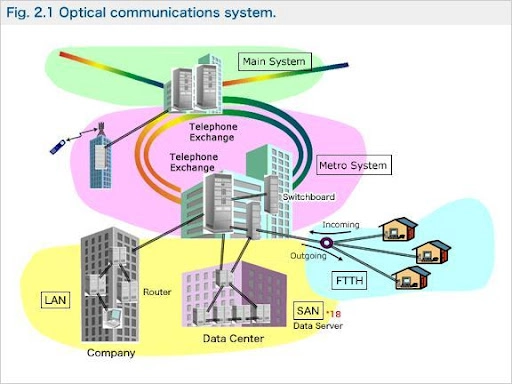
Figure 1: Optical Communication System
Source: https://semesters.in/
Fiber optic communication has made it possible for us to stay connected with the world, no matter where we are. It has replaced traditional copper cables and become the backbone of the internet.
This rise of fiber is largely due to fiber-based fixed broadband becoming the most reliable technology currently capable of delivering the speed and capacity expected by governments, businesses, and consumers. Compared to widely-used copper cables, modern optic fiber has exponentially higher throughput, lower latency, and significantly improved cost-effectiveness.
Add to that the fact that our fiber infrastructure is always in a state of network upgrade, and we have a powerful tool to overhaul major industries in our hands. This is due to many parallel innovations in communication technology that further empower progressive fiber upgrades, such as:
- 10G PON
- Wi-Fi 6 – 40% faster than previous WiFi gens
- Terabit Ethernet – Transmission speeds up to 400 Gbps
- Next-gen flexible Optical Service Unit – Differential bandwidth allocations and multiple service channels
The result? Improved video conferencing, faster downloading and uploading of large files and near-instant streaming of high-definition content. In a larger context, it is key to building smart cities, converged data centers, connected vehicles, smart manufacturing, and more.
Fiber for the Medical Industry
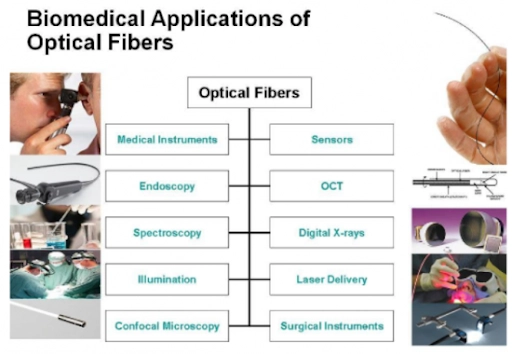
Figure 2: Biomedical Applications of Optical Fibres
Source – giiresearch.com
Fiber optics has also had a significant impact on the medical industry. In fact, by 2024, the medical fiber optics industry is poised to be worth $1 billion.
Medical devices that use fiber optics, such as endoscopes and laparoscopes, have made surgery less invasive and less painful for patients. These devices use thin, flexible fibers to transmit light and images in real-time, allowing doctors to perform surgeries through small incisions. This has resulted in faster recovery times and less scarring for patients. Deep fiber connections also enable advanced applications such as telemedicine and remote surgeries, thanks to reduced latency and higher-quality live video streaming.
Additionally, fiber optics is central to the development of new, innovative sensors compatible with complex medical instruments and procedures. They can add to the precision and accuracy of these machines, especially automated surgical robots.
Fiber for the Automotive Industry
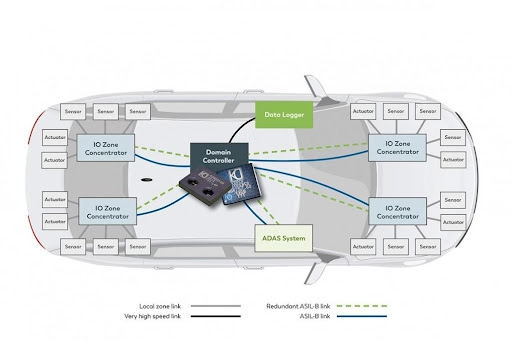
Figure 3: Fiber for the Automotive Industry
Source: kdpof.com
The automotive industry has also embraced fiber optics technology.
Fiber optic sensors are used to monitor various aspects of a vehicle, such as tire pressure, engine performance, and suspension. These sensors provide real-time information to the vehicle’s computer, enabling it to make precise and timely adjustments to improve performance and safety. That means quicker response times and greater vehicle control in emergency situations.
In addition, fiber optic cables are deployed in the entertainment systems of luxury vehicles, offering high-quality audio and video experiences for passengers.
Fiber for Defense and Aerospace Applications
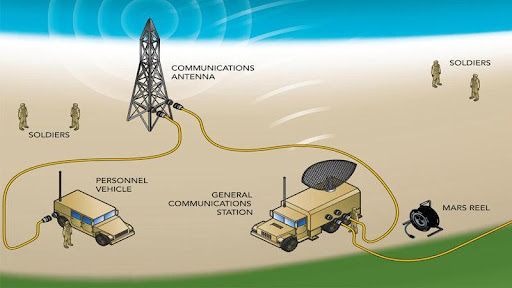
Figure 4: Fibre for Defence And Aerospace Applications
Source: fibersavvy.com
From border patrol to homeland security, defense systems across the world are deeply reliant on the latest communication networks to stay connected and prepared. This is where fiber deep networks have enabled defense communication networks to upgrade from weak legacy systems. Fiber optic communication systems are used to transmit secure, high-speed data over long distances in the field and across remote and dangerous terrain.
Additionally, fiber optic sensors are also used to monitor the structural integrity of military aircraft, ships, and vehicles. Other applications include avionics, mission control systems, weapon control, flight planning, etc. This has improved the speed and efficiency of critical military operations as well as the safety of soldiers.
Fiber for Lighting and Decorations
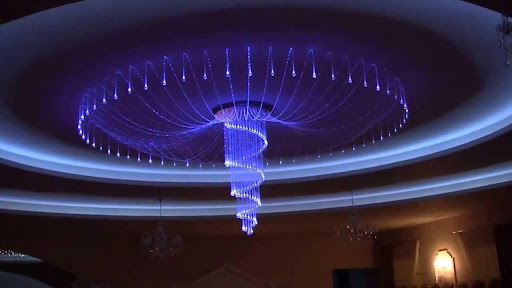
FIgure 5: Fibre for Lighting and Decorations
Source: in.pinterest.com
The beauty of optical fiber is that it is not just a powerhouse in advanced industrial applications but can also light up your space. Fiber optic lighting is used to create vibrant and colorful lighting effects, making it popular for use at home. Not only does optical fiber amp up the décor of a space, but it also makes for a premium, affordable, and long-lasting lighting solution for offices, restaurants, and retail stores.
Final Thoughts: Fiber is the Fabric of the Future
There is no doubt that optical fiber, in its many shapes, forms, and applications, has become the foundation of digital economies and industries far and wide. In many ways, it is enabling the next great industrial revolution that touches and connects billions of lives with transformative innovations.
With its numerous advantages, including faster data transmission speeds and higher bandwidth, fiber optic technology is likely to continue to play a crucial role in shaping the future of many industries. Moreover, as data becomes critical to more and more industries and shapes our everyday lives, ensuring swift and deep fiberisation of our world is how we open the door to a brighter future.
Frequently Asked Questions
A photodetector is an electronic device that converts light signals into electrical signals. Photodetectors are commonly used in fiber optic communication systems to detect and convert incoming optical signals into electrical signals that can be processed by electronic devices.
Compared to regular copper cable networks, optical fiber has many benefits. These include faster data transmission speeds, higher bandwidth, lower latency, and improved resistance to interference. Moreover, fiber optic cables have a much smaller form factor and reduced weight. This makes installation and deployment much easier and more cost-effective.
There is no theoretical limit on the data transmission speed of a fiber optics network. However, practical limitations, such as the speed of the photodetector and the signal processing capabilities of the receiving equipment, can affect the actual data transmission speed. Currently, fiber optic networks are capable of transmitting data at speeds of up to 100 Gbps or more, and advances in technology are likely to continue to increase this speed in the future.
Electrical signals can be converted into optical signals by using a device called a modulator. A modulator converts an electrical signal into an optical signal by varying the intensity of a light source in response to the electrical signal. This allows the optical signal to carry information, which can be transmitted over fiber optic cables and then converted back into an electrical signal at the receiving end.
Fibers can be classified into two main modes of propagation: single-mode fibers and multi-mode fibers. Single-mode fibers have a small core diameter, which allows only one mode of light to propagate through the fiber. This results in low dispersion and higher bandwidth, making single-mode fibers suitable for long-distance, high-speed communication applications. Multi-mode fibers have a larger core diameter, which allows multiple modes of light to propagate through the fiber. This results in higher dispersion and lower bandwidth, making multi-mode fibers more suitable for short-distance, lower-speed communication applications.

